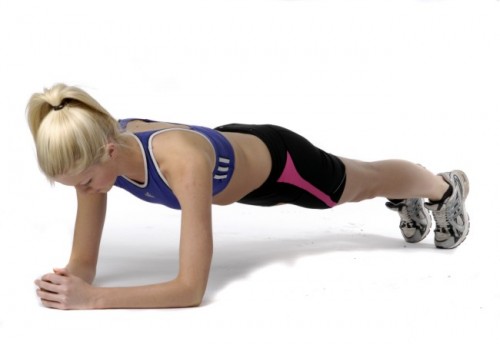The Plank is one of the most versatile full-body exercises you can do. As I tell my Pilates classes, the beauty of the Plank is that it never gets easy, just easier … and when it does, there are plenty of ways to make it harder.
Basic Plank: Get into a push-up position, with arms directly in line with the shoulders. Tuck your abs in tight, and maintain a straight line from your head down to your toes. The key here is to focus on maintaining a flat plane – as I like to say, no butts and no bellies (this takes the tension away from the abs, instead putting pressure on the low back or the shoulders).
Depending on your fitness level, there are a number of variations:
- To make it easier, you can change your position to hands and knees, forearms and toes, or forearms and knees.
- To make it harder, you can lift one foot, one arm, or one arm and the opposite foot at the same time.
- If you have a Swiss ball, you have a few more options. To position the ball at the upper body, you can keep both feet (or knees) down on the ground, with forearms or straight arms on the ball. To position the ball on the lower body, you can roll out so that the ball rests anywhere below the knees (out to the toes), with straight arms (top of a push-up position).
- If you have a medicine ball of any weight, you can do several variations to the Swiss ball Plank. One option includes placing both hands on the medicine ball, with the weight either in your toes or knees. For another, you can place the toes on the ball, upper body balanced by the hands or the forearms.
- Feeling adventurous? Place the medicine ball under one foot, and extend the other foot back and off the ground. It may take a few tries to get the footing down, but you can get adjusted easier if you start with the ball against a wall. To switch feet, bring both feet onto the ball, and roll to the other side so your body is still in proper alignment. It’s TOUGH!
Happy Planking!




Post your comment